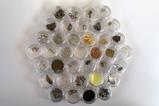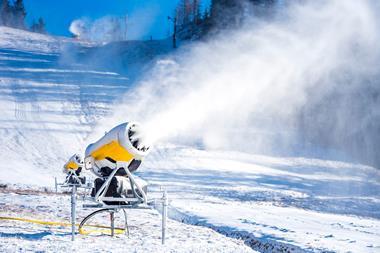Why we should all be keeping an eye on our water supply

Watching the second of Denis Villeneuve’s Dune films at the cinema, I have rarely felt more grateful for the oversized cold beverage I purchased at the kiosk. An adaptation of the second part of Frank Herbert’s 1965 novel Dune, the film follows protagonist Paul Atreides as he unites with the Fremen people of the fictional desert planet Arrakis. The 2 hour 46 minute epic inspired me to try out ‘sand dancing’ on my next visit to the beach but more seriously, it provided a stark reminder that a lack of access to water is not part of a dystopian near-future depicted in science fiction, but rather a present day reality for so many people around the world.
‘Water is humanity’s lifeblood, flowing across all forms of life, cultures and economies around the world. It is a human right and a common development denominator for shaping a better future. But as this report makes clear, our increasingly unsustainable use of this precious resource is spelling disaster for people, prosperity and planet alike.’
These are the first few lines of António Guterres’ (the ninth Secretary-General of the United Nations) foreword to a 2023 United Nations report on accelerating progress towards Sustainable Development Goal (SDG) 6: clean water and sanitation for all.
As with so much of this report, the words are as deeply sobering as they are motivating and urgent. Limited access to clean water and adequate sanitation affects billions of people around the world. While some progress has been made since the launch of SDG 6 alongside the other 11 SDGs in 2015, a rapid acceleration is needed if we are to have any hope of reaching the targets that are supposed to be met by 2030. For example, while almost 700 million people ‘have gained access to safely managed drinking water services’, reaching universal access for the 2.2 billion people still lacking this basic right would require, on average, ‘a sixfold increase in current rates of progress’.
Rising levels of scarcity
For those of us with reliable access to safe and clean drinking water, SDG 6 remains highly relevant beyond shared care, concern and anger for those who do not. Hosepipe bans and other water restrictions are on the rise in countries across the world together with increasing awareness of rising water scarcity. Similarly, concerns about wastewater treatment and ambient water quality are also bubbling to the surface. For example, in 2022, water companies across England and Wales reported over 384,000 discharges of raw sewage into rivers and the sea – that’s over 1000 every day!
Water, with its simple chemical formula, remains one of the most fundamentally important molecules for life. And across the world this importance is recognised by the large number of projects that involve the public in water monitoring projects through citizen science. As I explored in an article from a few years ago, chemistry remains underrepresented as a field in citizen science, but of all chemistry projects listed on major citizen science databases, water monitoring projects are perhaps unsurprisingly the most abundant. We’ve touched on a few such projects in this column, including some from Hong Kong, the US, (here, here and here), Colombia, Portugal and the UK (here and here).
As well as providing an important platform for advocacy and holding governments, environmental agencies and international policy makers to account, these citizen science projects provide a rich opportunity to increase awareness of the chemistry of our water supply and a more nuanced understanding of the water cycle and how we can influence positive consumer behaviour. While many projects focus on pollutants or unwanted chemicals dissolved or suspended in water, there’s also an opportunity to talk about what water ‘purity’ really means and how the presence of different ions in the right quantities can be good for us.
Water, with its simple chemical formula, remains one of the most fundamentally important molecules for life. And across the world this importance is recognised by the large number of projects that involve the public in water monitoring projects through citizen science. As I explored in an article a few years ago (Chemistry World, April 2019, p15) , chemistry remains underrepresented as a field in citizen science, but of all chemistry projects listed on major citizen science databases, water monitoring projects are perhaps unsurprisingly the most abundant. We’ve touched on a few such projects in this column, including some from Hong Kong, the US, Colombia, Portugal and the UK.
As well as providing an important platform for advocacy and holding governments, environmental agencies and international policy makers to account, these citizen science projects provide a rich opportunity to increase awareness of the chemistry of our water supply and a more nuanced understanding of the water cycle and how we can influence positive consumer behaviour. While many projects focus on pollutants or unwanted chemicals dissolved or suspended in water, there’s also an opportunity to talk about what water ‘purity’ really means and how the presence of different ions in the right quantities can be good for us.
We must all change our use of water
Bringing conversations about local water supply into the community and as part of school chemistry classes can provide occasions for authentic learning experiences that engender a greater sense of environmental context and awareness. And, in addition to learning about chemistry, these opportunites can open up important discussions about equality of access to water worldwide and the ways that we must all change our use of water and other related behaviours if we are to mitigate a reality foreshadowed in dystopian fictions. Together with all of the SDGs, it’s time for chemists and chemistry to play a more significant role in accelerating our progress towards SDG 6, and citizen science has a key part to play.

















No comments yet